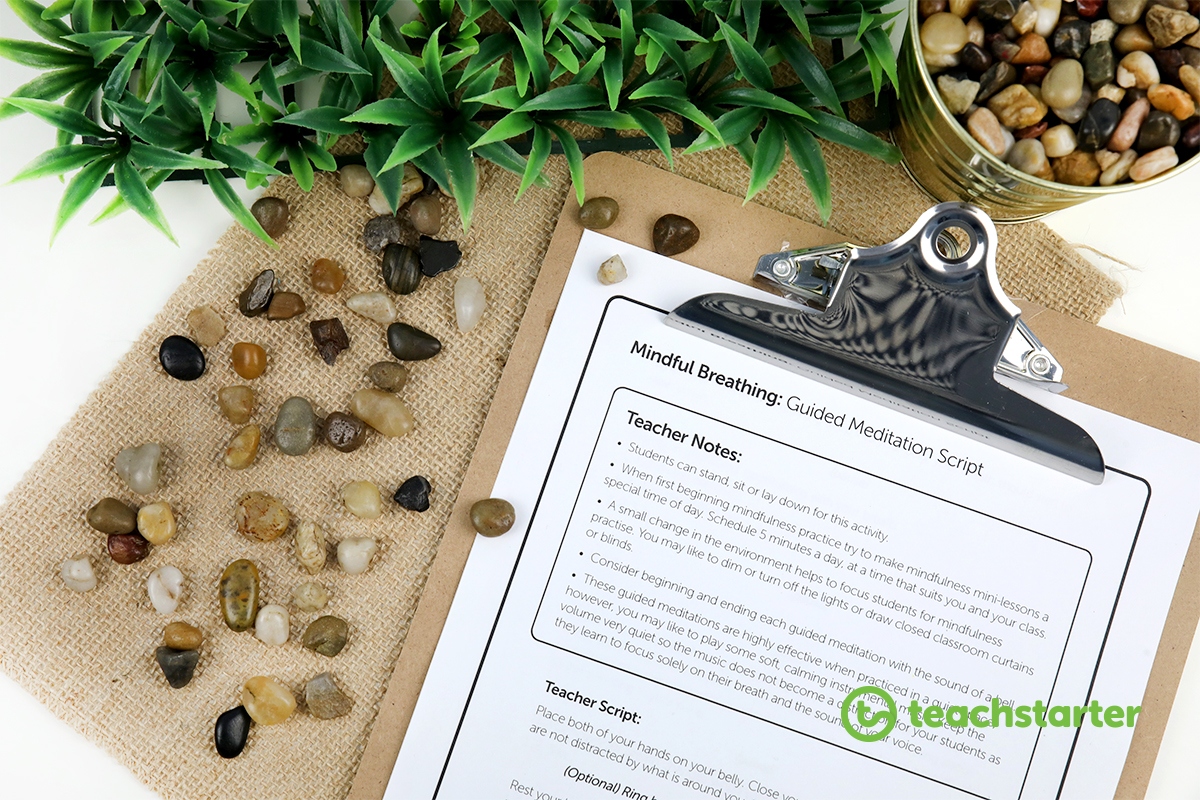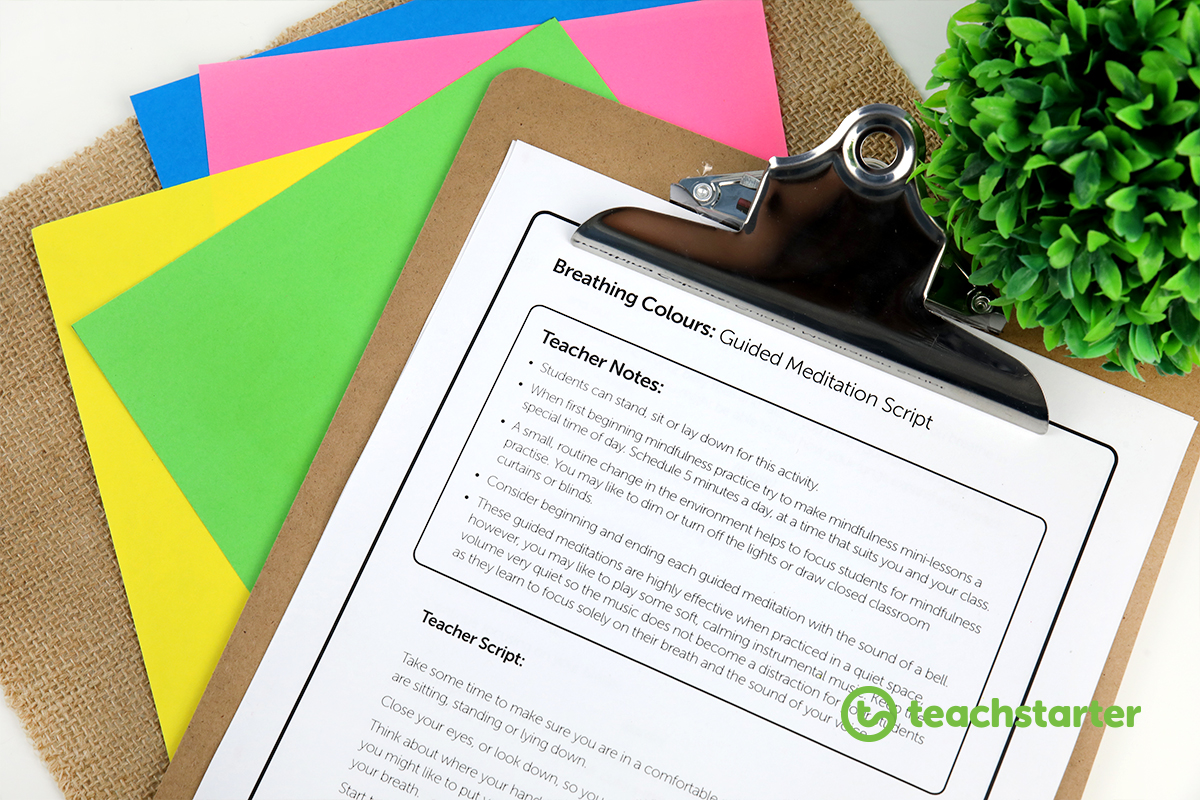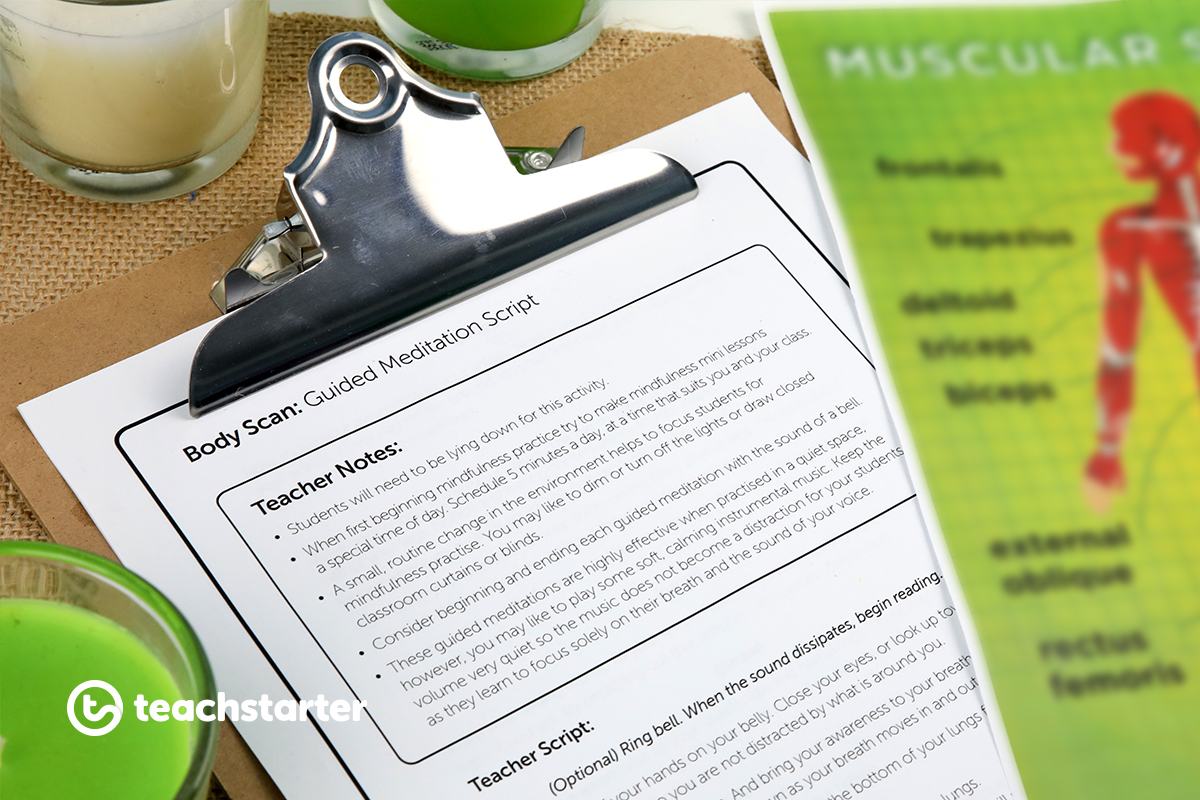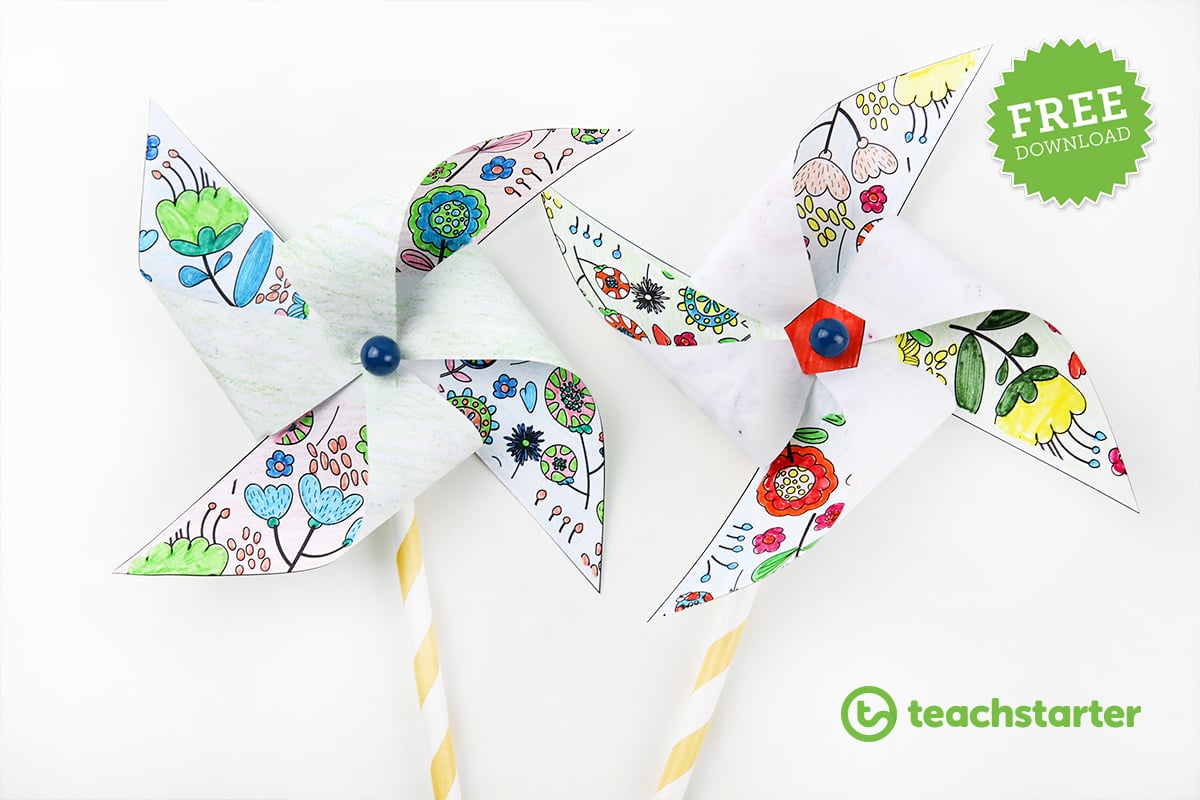The benefits of teaching meditation and mindfulness to children can be profound. It’s a movement that is building momentum in mainstream education, not only for its amazing effects on student learning and behaviour but because mindfulness is such a valuable, life-long skill. We’ve recently created some new mindfulness resources for teachers to use with their students on the quest to mindful living. These teacher resources include a series of guided meditations for children.
Guided meditations are a series of instructions spoken aloud to a group, directing participants focus and awareness in specific ways.
The value of guided meditations in a child’s development of mindfulness and self-regulation is immense. Guided meditations teach children the language of mindfulness as well as life-long meditation skills that can help improve self-awareness and concentration.
In essence, guided meditations hold a child’s hand as they learn to navigate the busyness of their own thoughts and feelings and build an awareness of their own mind-body habits.

Guided Meditation for Children
Here are three printable guided meditation scripts you can use with your students. The scripts are written using casual, child-friendly language, however, you can and should make adaptations as needed for your specific student group.
Mindful Breathing Guided Meditation
This is a great guided meditation for beginners. It introduces the concepts of focusing on the breath in a way that is easy for kids to understand. The meditation gradually build’s awareness of how we can deepen our breath and teaches students how to practise “belly breathing”.
Breathing Colours Guided Meditation
The Breathing Colours Guided Meditation takes mindful breathing to the next level by adding a simple visualisation. In this meditation, students are asked to visualise their breath as a colour that travels in and out of their body. This more “tangible” mental image helps to provide kids with the skills they need to use their breath to calm themselves down in moments of stress, anger or upset.
Body Scan Guided Meditation
For students who have practised meditation a little bit already and can lay with focus for at least 10 minutes or so, this Body Scan Guided Meditation is a fantastic one. Also known as “progressive relaxation”, this type of guided meditation asks students to move their awareness through their entire body, from their feet through to the tops of their heads.
Body Scans make for excellent meditation “homework”, as students can do their own body scan meditation as they lay in bed before sleeping at night.
If you haven’t yet encountered anything about teaching meditation or mindfulness in schools, you might like to begin by exploring the benefits of teaching mindfulness and get some idea of what mindfulness activities for the classroom look like. We have also created an information sheet for teachers which has some tips and tricks for beginning your mindfulness teaching journey.
Tips for Using Guided Meditations in the Classroom
#1 Develop a Personal Practice
Before jumping straight into running a guided meditation session with your students, spend some time familiarising yourself with the practice. Apps like Smiling Minds are a fantastic starting point for those who are new to meditation.
#2 Build Your Class’ Focus Stamina
Even within a single age-group, different kids have different attention spans. Concentration is a practised skill and it’s important to take this into consideration when planning your classroom mindfulness activities and meditation sessions.
It’s a really good idea to begin teaching mindfulness through shorter, more active practices before expecting students to sit or lay down in silence for even a 5-minute guided meditation.
Our blog post “18 Amazing Mindfulness Activities for the Classroom” has a range of ideas and resources for other activities that will help build your students’ focus stamina. Some fantastic starters in the post are Pinwheel Breathing, Breathing Hands and the “Shark Fin” activity.
#3 Set Mindfulness Homework
Yep, homework!
It doesn’t matter whether you consider yourself on or off the “value of homework” bandwagon, encouraging your students to practise their own mindfulness and meditation skills outside of class time is important. Not only can students (in fact, anyone!) “practise” mindfulness during any of their regular activities (while walking home, eating, or laying down to sleep), but building a habit of making mindfulness a conscious choice, outside of a teacher’s direct instruction, is where these skills really become life-long ones.
Students could keep track of the number of times they use mindfulness or do quiet meditation outside of school with stickers on a personal chart, or in a bullet-journal style record.











Comments